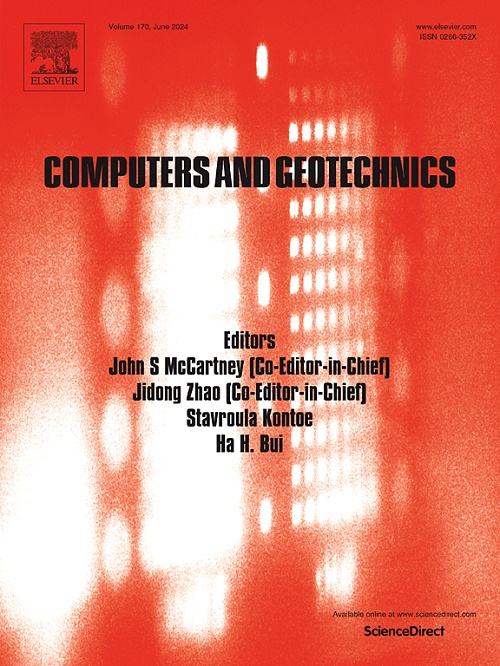Time-dependent system reliability analysis of anchor-reinforced slopes based on surrogate models
IF 5.3
1区 工程技术
Q1 COMPUTER SCIENCE, INTERDISCIPLINARY APPLICATIONS
引用次数: 0
Abstract
This study proposes a time-variant reliability calculation method for anchor-reinforced slope systems (ARSS) based on a surrogate model. By incorporating composite failure modes, the variability of geotechnical materials, and the effects of corrosion as uncertainty factors, the proposed method overcomes the limitations of traditional system reliability analysis approaches. The probability of system failure is defined as the sum of the product of the combined probabilities of local anchor failures and the conditional probabilities of slope failure under corresponding conditions. The time-variant system reliability of the anchor-reinforced capacity, which degrades over time due to corrosion effects, is also calculated. The results indicate that ARSS possesses a certain level of redundancy. However, owing to the stress redistribution effect, local anchor failures significantly increase the probability that the remaining anchors and the slope fail. The failure of adjacent anchors and those in the middle to lower portions of the slope has a more significant impact. While the probability of system failure is dominated primarily by non-anchor failure events, neglecting local anchor failures can lead to nonconservative results. Anchors initially exhibit strong corrosion resistance. However, over time, the corrosion effect significantly reduces their load-bearing capacity, resulting in a nearly fourfold increase in the probability of slope failure. This study highlights the importance of accounting for local anchor failures, geotechnical material variability, and corrosion effects in long-term reliability assessments of ARSS. Such considerations contribute to enhancing the safety and sustainability of geotechnical engineering practices.
基于代理模型的锚固边坡时变系统可靠度分析
提出了一种基于代理模型的锚固加固边坡体系时变可靠度计算方法。通过将复合失效模式、岩土材料的可变性和腐蚀的影响作为不确定因素,该方法克服了传统系统可靠性分析方法的局限性。系统失稳概率定义为局部锚杆失稳组合概率与相应条件下边坡失稳条件概率乘积的和。还计算了锚固加固能力的时变系统可靠性,该可靠性由于腐蚀效应而随时间退化。结果表明,ARSS具有一定的冗余度。然而,由于应力重分布效应,局部锚杆破坏显著增加了剩余锚杆和边坡破坏的概率。相邻锚杆及边坡中下部锚杆的破坏影响更为显著。虽然系统故障的概率主要由非锚点故障事件决定,但忽略局部锚点故障可能导致非保守结果。锚最初表现出很强的耐腐蚀性。然而,随着时间的推移,腐蚀作用显著降低了它们的承载能力,导致边坡破坏的概率增加了近四倍。这项研究强调了在ARSS的长期可靠性评估中考虑局部锚杆失效、岩土材料变异性和腐蚀影响的重要性。这些考虑有助于提高岩土工程实践的安全性和可持续性。
本文章由计算机程序翻译,如有差异,请以英文原文为准。
求助全文
约1分钟内获得全文
求助全文
来源期刊

Computers and Geotechnics
地学-地球科学综合
CiteScore
9.10
自引率
15.10%
发文量
438
审稿时长
45 days
期刊介绍:
The use of computers is firmly established in geotechnical engineering and continues to grow rapidly in both engineering practice and academe. The development of advanced numerical techniques and constitutive modeling, in conjunction with rapid developments in computer hardware, enables problems to be tackled that were unthinkable even a few years ago. Computers and Geotechnics provides an up-to-date reference for engineers and researchers engaged in computer aided analysis and research in geotechnical engineering. The journal is intended for an expeditious dissemination of advanced computer applications across a broad range of geotechnical topics. Contributions on advances in numerical algorithms, computer implementation of new constitutive models and probabilistic methods are especially encouraged.
 求助内容:
求助内容: 应助结果提醒方式:
应助结果提醒方式:


